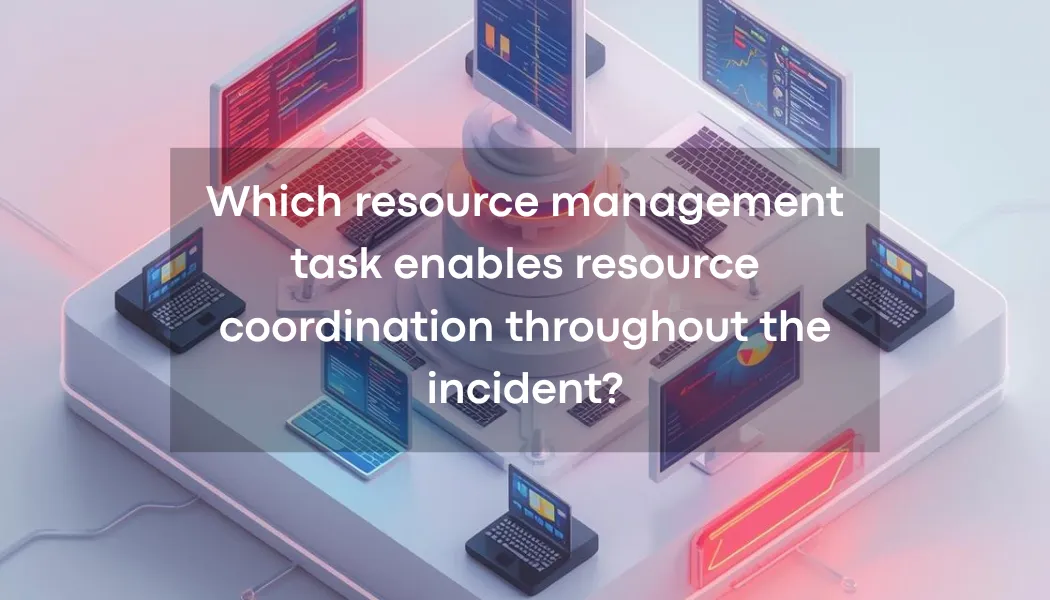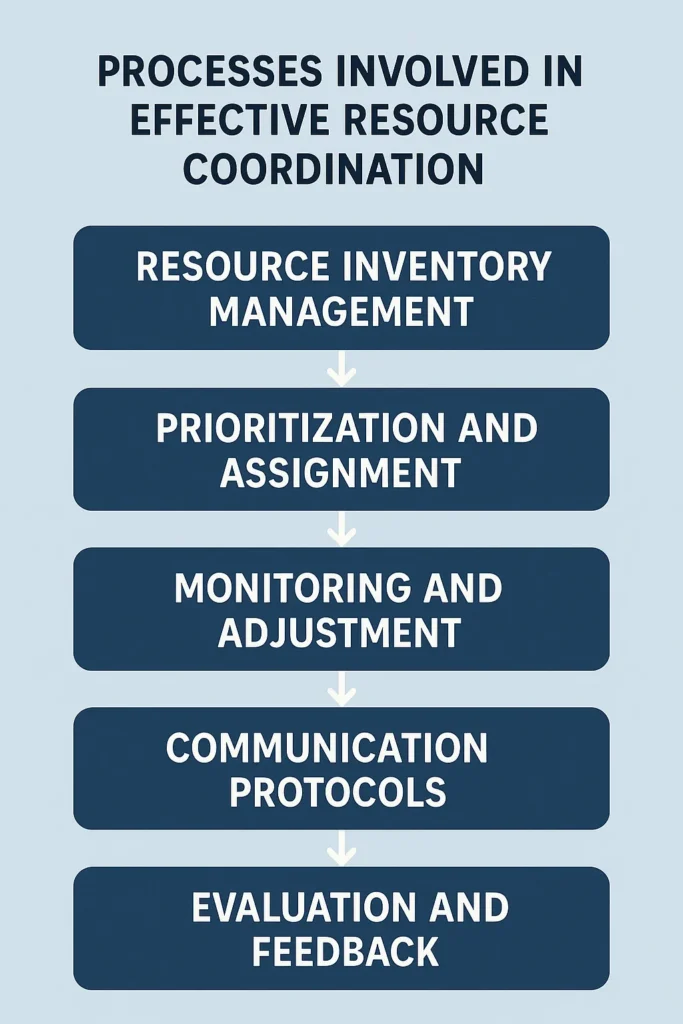
Executive Summary
In any incident—whether emergency response, large-scale event management, or operational disruption—resources must be effectively managed to achieve timely and efficient outcomes. Resource management encompasses a variety of tasks, including identification, allocation, deployment, and tracking of resources. Among these, the task that specifically enables resource coordination throughout the incident is critical for ensuring operational continuity, situational awareness, and effective decision-making.
This guide explores the concept of resource coordination, its role in incident management, key processes, and best practices to maximize efficiency and responsiveness.
Table of Content
What Is Resource Coordination?
Resource coordination is a structured task within resource management that focuses on tracking, organizing, and directing resources during an ongoing incident. Unlike resource deployment, which assigns resources at the start, coordination ensures that all assets—personnel, equipment, and supplies—remain aligned with evolving incident priorities.
Key objectives of resource coordination include:
- Ensuring resources are available when and where they are needed.
- Maintaining situational awareness of resource status.
- Optimizing the use of limited or high-demand resources.
- Facilitating communication between teams and incident managers.
- Supporting adaptability as the incident evolves.
Role in Incident Management
During an incident, conditions often change rapidly. Resource coordination ensures that:
- Assignments are updated in real-time as new priorities emerge.
- Duplicate efforts are minimized, preventing wasted time or over-allocation of resources.
- Critical gaps are identified, enabling proactive deployment or reallocation.
- Accountability is maintained through clear tracking and reporting mechanisms.
This task is typically managed through the Incident Command System (ICS) or similar frameworks, where a dedicated Resource Unit or Resource Coordinator oversees operations from planning through demobilization.
Key Components of Resource Coordination
- Resource Tracking
- Monitoring the status, location, and availability of resources.
- Updating records to reflect assignments, usage, and readiness.
- Resource Allocation and Reallocation
- Assigning resources based on operational priorities.
- Reassigning or redirecting resources as situations evolve.
- Communication and Reporting
- Maintaining channels between teams, command staff, and logistics.
- Providing real-time updates for decision-making.
- Documentation and Accountability
- Recording resource usage, movement, and deployment history.
- Ensuring transparency and compliance with operational protocols.
- Resource Demobilization
- Coordinating the safe and efficient withdrawal of resources once tasks are complete.
- Maintaining readiness for redeployment if needed.
Processes Involved in Effective Resource Coordination
To ensure seamless coordination, organizations typically follow a structured approach:

- Resource Inventory Management – Catalog all available resources, including personnel qualifications, equipment types, and capacities.
- Prioritization and Assignment – Match resources to tasks based on criticality, skills required, and operational objectives.
- Monitoring and Adjustment – Continuously track resource performance and adjust deployment as needed.
- Communication Protocols – Establish reporting lines and update schedules to ensure all stakeholders are informed.
- Evaluation and Feedback – Post-incident review to improve resource coordination for future events.
Tools and Technologies for Resource Coordination
Modern incidents often rely on technology to enhance resource coordination. Key tools include:
- Resource Management Software – Centralized platforms to track and assign resources dynamically.
- GIS Mapping Systems – Visualize resource locations and movements in real-time.
- Communication Platforms – Ensure seamless coordination among teams, including radios, messaging apps, and dashboards.
- Data Analytics – Analyze patterns of resource use to optimize future deployment.
Benefits of Effective Resource Coordination
- Improved Efficiency – Resources are used where they are most needed, minimizing idle time.
- Enhanced Situational Awareness – Command staff have a clear understanding of resource status and gaps.
- Faster Response Times – Quick reallocation and deployment improve overall operational performance.
- Cost Savings – Optimal use of resources reduces unnecessary expenditure.
- Safety and Compliance – Ensures personnel are deployed appropriately, reducing risks and maintaining accountability.
Resource coordination is most effective when paired with strong planning, allocation, and workforce strategies.
- To understand how teams decide where and how resources should be assigned before coordination begins, explore Resource Allocation vs. Resource Deployment: What’s the Difference and Why It Matters.
- Dive into What Is Workforce Management: Definition, Process, and Benefits Explained to learn how organizations handle scheduling, staffing, and performance optimization.
- And if you want a bigger-picture understanding of how coordinated resources support multiple ongoing projects, check out The Ultimate Guide to Program Management: Processes, Tools, and Strategies.
Best Practices for Resource Coordination
- Maintain an Updated Resource Inventory – Ensure all assets, personnel skills, and availability are current.
- Use Real-Time Tracking Systems – Implement GPS or software-based tracking for visibility.
- Establish Clear Communication Channels – Prevent misalignment between teams and command units.
- Train Resource Coordinators Regularly – Skilled coordinators are critical to adapting to changing circumstances.
- Implement Standard Operating Procedures (SOPs) – Streamline processes for deployment, reallocation, and demobilization.
- Conduct After-Action Reviews – Identify lessons learned and improve future incident coordination.
Conclusion
Resource coordination is the central task that enables efficient and effective management of personnel, equipment, and materials throughout an incident. By monitoring, directing, and optimizing resources in real time, organizations can improve response times, minimize waste, and maintain operational control. Integrating best practices, advanced tools, and trained coordinators ensures that resources are not only deployed effectively but also aligned continuously with the evolving demands of any incident.


